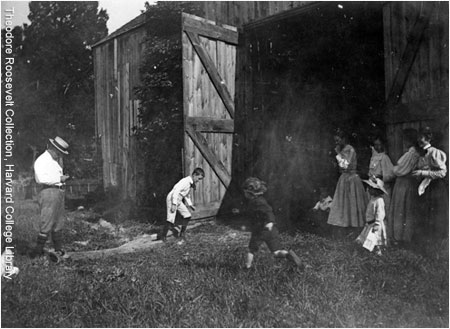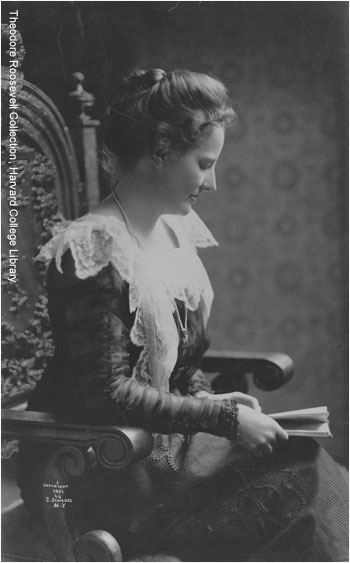T.R. & Oyster Bay

Theodore Roosevelt first fell in love with the woods and waters of Oyster Bay when he was 16 and visiting for the summer. He passed the days hiking, swimming, rowing and—without fail—listening for birdsongs. He’d repeat the sounds over and over to himself and then record them in his notebook.
As T.R. grew older, he only grew fonder of Oyster Bay. So in 1880, when he was 22, he bought some land there on a gently rounded hill and built a home, Sagamore Hill. With his wife, Edith Kermit Roosevelt, he raised six children, often leading them on brisk walks through the woods and meadows and along the shoreline. For seven summers, the home doubled as the Summer White House, with T.R. transplanting his staff from Washington to Oyster Bay.


T.R. was continually struck by the natural beauty of the area. “It is lovely country,” he wrote toward the end of his life. “The coast line of the Sound is broken by cove and bay, and the salt marshes alternate with low tree-covered bluffs, and beach plums and bayberries and beach rosemary grow on the stretches of white sand. Back of the coast line come meadows and orchards, and in the rolling lands behind are pastures, and many ponds, and very rarely a brook.”
When it came time for Theodore and Edith Roosevelt to pick a final resting place, Oyster Bay was a natural choice.They turned to the Youngs family, longtime local farmers who had provided the land for Sagamore Hill. In 1658, the family had created their own burial ground on a steep, grassy incline about a mile from Sagamore Hill, and eventually they opened it to neighbors.T.R. was buried at the top of the hill in 1919, at age 60; Edith was buried beside him in 1948, at 87.
In T.R.’s memory, a bird sanctuary was created adjacent to the cemetery in 1923. Now, he is never far from the old sweet songs of the wrens, the robins, the cardinals and—his favorite in the area—the wood thrushes. “Their serene, leisurely songs,” he once wrote, “ring through the leafy arches all day long.”




